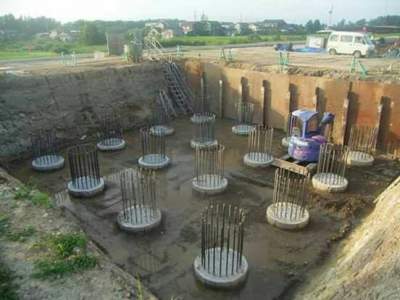Foundation is one of the most important parts of the structure. Foundation is defined as that part of the structure that transfers the load from the structure as well as its own weight over a large area of soil in such a way that the load does not exceed the ultimate bearing capacity of the soil and the settlement of the total structure remains within a tolerable limit.
Pile foundation, a kind of deep foundation, is actually a slender column or long cylinder made of materials such as concrete or steel which are used to support the structure and transfer the load at desired depth either by end bearing or skin friction.

Friction Pile
Friction pile is a kind of pile foundation. This type of pile utilizes the frictional resistance force between the pile surface and adjacent soil to transfer the superstructure load. Depending on the subsoil strata condition, resistance force due to friction can develop in a definite pile length of on the full length. For a stable foundation condition, the friction force must be adequate to support the superstructure.
How to Calculate Friction Pile Capacity?
To calculate the capacity of a friction pile one has to multiply the pile surface area to the safe friction force developed per unit area.
The skin friction to be developed at a pile surface should be evaluated sincerely and a reasonable factor of safety should be considered.
How to Increase Friction Pile Capacity?
To increase the friction pile capacity pile diameter, depth, pile number, and pile surface roughness, etc. can be increased.
Pile Foundation Articles
- What is Pile Foundation? Types of Pile Foundation
- Uses of Pile Foundation
- Pile foundation advantages and disadvantages
- Factors Affecting Selection of Pile Foundation Type
- Causes of Pile Foundation Failure
- Difference Between Shallow and Deep Foundation
- What is Friction Pile? Capacity Calculation & Details
- Differences Between Pile and Pier Foundation
- Difference Between Piles, Piers, and Caissons

